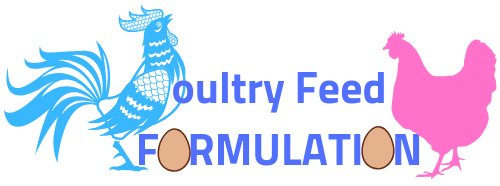Poultry feed formulation or least cost formulation does not simply involve complex mathematical formulas. In a previous post on poultry feed formulation, we said that this process is both a science and an art.
You might carry out excellent mathematical calculations for your feed formulations but it may be impractical based on your circumstances or the result may not be the best for ensuring your birds have optimal quality feeds.

Professional animal nutritionists will generally test the feed formulation before the feed is given to the birds. Here are some key factors to keep in mind when formulating your poultry feeds:-
1. Keep in Mind the Adaptability of Your Poultry
The feeds that you formulate should be palatable in order for it to stimulate intake by the targeted poultry. If the birds refuse to eat the formulation because it is not palatable, then you will have wasted a lot of money as the poultry feeds must be eaten by the birds for the food to serve its purpose.
2. You Should Look at Digestibility
The nutrients used in the poultry feeds have to be digestible and released into the birds’ gastrointestinal tract for the nutrients to be used by the birds. The digestive system of the chickens does not generally favour food rations with high fibre content.
3. Look at the Cost of the Poultry Feed Formulation
The cost is one of the most important factors when it comes to poultry feeds formulation. Fortunately for many poultry feed producers and poultry producers, the nutrient requirements of chickens can be met by a host of combinations of various feed ingredients.
When you look at the costs of all these feed ingredients, you will only need to have a single least cost formulation. The least cost feed formulation should at the end of the day ensure that the nutrient requirements of the chickens are met and that you have been able to meet your objectives when preparing your poultry feeds.
4. Look at the Presence of Toxins and Anti-Nutritional Factors
Anti-nutritional factors in the poultry feeds will affect the digestion of the feeds and potentially deny the birds essential nutrients. An example of an anti-nutritional factor is the anti-trypsin that is found in soybean meal. There are various ways to control or mitigate the impact of the anti-nutritional factors in your poultry feeds that we will discuss in subsequent articles.
There are certain feed ingredients which may also contain toxins. If these toxic substances are present in large amount, this could be detrimental to the health of your poultry. Where possible, limit or eliminate the inclusion in your poultry feed formulation of ingredients that may contain toxins.
You should also look at factors such the texture of the feeds, moisture content as well as the kind of processing that feed will go through.
Related posts:



its really a great website
The best formula for broiler to mature in eight to nine weeks.
http://buyplaquenilcv.com/ – Plaquenil
Feldman Sleisinger Fordtrans Gastrointestinal and Liver Disease. plaquenil and corona virus Ou Acheter Cialis En France